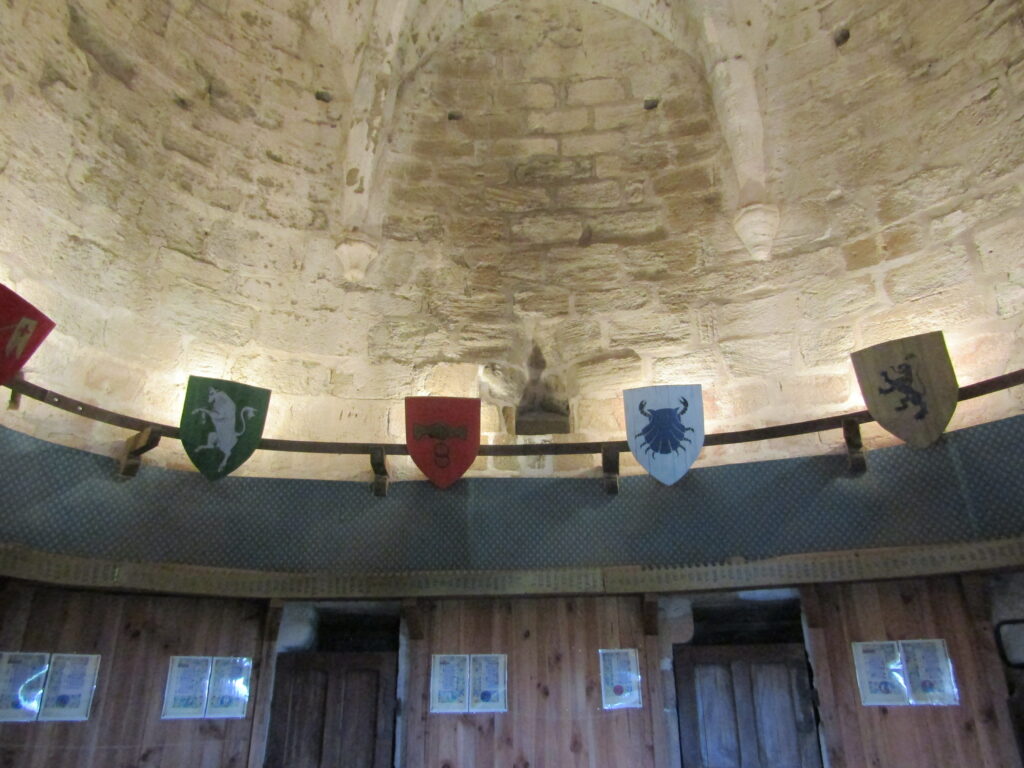Central tower, room 6
A scriptorium was set up in this room in the early 1990s to illustrate another aspect of daily medieval life. Scriptoria was the monks’ sole preserve until the XIIth c. By the mid-XIVth c. copyist started opening shops in city centres, a consequence of a wider diffusion of paper.
The vault peaks at 6m and replaces a former pepperbox as in the other tower at this level. The consoles bear the weight of the chamfered ribs; they were badly restored, probably in the 1930s, and their design used to be more finely crafted. The vault seems to have kept its original whitewash, which could also date from the 1930s.
Look at the keystone which represents grapes and vine leaves. Grapes were not very common at the table in the Middle Ages, as it was mainly used for wine making.
The hole you will have probably noted, at about 3.30m from the floor is the first-floor chimney pipe, which was lost when the height of the tower was raised in the 1370s.
The six windows essentially had a military function, and were used for observation or fire. They were fitted with pivoting shutters fixed on a very high horizontal axis, that would close by itself after firing. Two of these windows were walled-up when the height of the Old-Hall was raised in the late XIVth c.
In the spiral stairwell, a few steps below the entrance to this room, the walled-up door led to a former walk-walk. Higher up, another door (now fitted with a metal gate) was the access to the deck roof that covered the Old-Hall.
Now walk up to the tower’s deck to enjoy the view, and don’t forget to flash the other QR code in this room to find out about the Saint Chapels.
© March 2023
